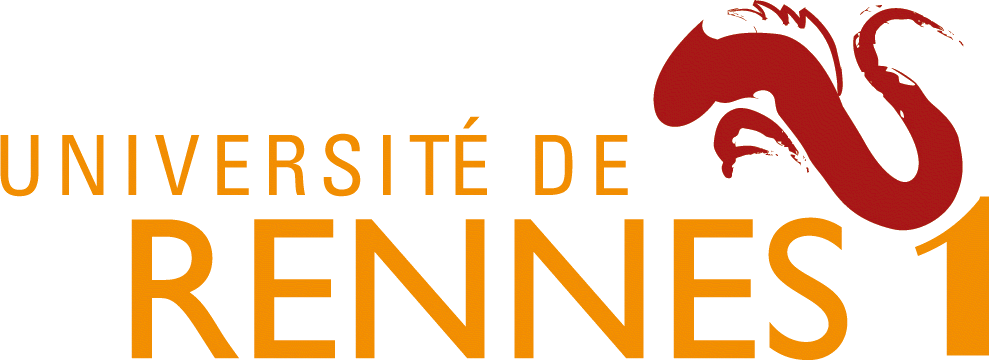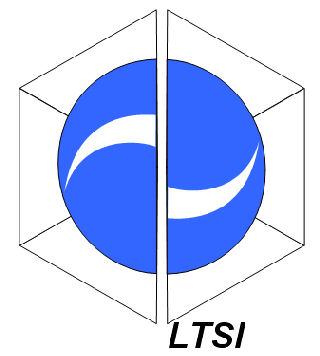News
Members
Publications
Software / Data
Job offers
Images / Videos
Collaborations
Conferences
Lab meetings: "Les partages de midi"
Practical information
Members Area
Next conferences we are in …


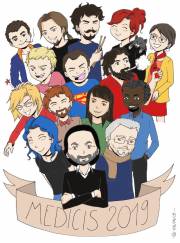
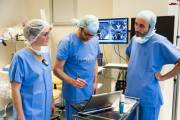
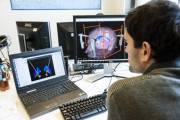
There are three types of decision that may be impacted by the systems we want to develop: managerial decision, process of care, and outcome-based decision. We will cover these different aspects into three application areas.
Leader: Pr. X. Morandi Participants: P. Jannin, L. Riffaud, D. Bouget, F. Lalys, B. Gibaud Collaborations: T. Neumuth (ICCAS, Leipzig) Industrial partners: Zeiss Meditech
Two main objectives are targeted for this area: 1) studying methods for understanding and modelling differences between surgical or interventional procedures with different populations of patients, clinicians, and protocols, 2) studying strategies for automatic recognition of surgical or interventional activities from videos of surgical microscope. First, we will develop and apply registration methods between surgical process models (SPM) that allow computing differences between populations. We will study differences in performance between junior and senior clinicians for spinal surgery, interventional neuroradiology, and cochlear implant procedures. We will compare the surgical practice between different groups of surgeons (i.e., ENT surgeons vs. neurosurgeons in pituitary surgery). We will study the differences between clinical sites in an international study involving the neurosurgical departments of Rennes, Leipzig (ICCAS, University Hospital, Germany) and Montreal (MNI, McGill University Hospital, Canada) for anterior cervical decompression and fusion procedures. About 24 procedures will be recorded at each site and collected into data repositories. Statistical analysis will be performed for outlining significant differences in term of operative time and number of activities. Our registration methods will be also used for analyzing the differences in the sequential dimension of the surgical procedures. Methods and models developed for cranial and spinal procedures will be applied for other types of interventions. We will study radiation exposure with different imaging protocols and their impact on interventional times in the context of interventional neuroradiology. We will apply for a national PHRC (PI: Pr. Jean-Yves Gauvrit). In collaboration with the INSERM unit U650 (E. Stindel) in Brest, we will study the surgical processes in the context of orthopaedics. With the LTSI UMR642 (P. Haigron), we will study the surgical processes in the context of cardio-vascular interventional radiology. We believe that such analysis of surgeon’s activities could serve as a basis for developing new pedagogical concepts for training young surgeons or the surgical staff, as well as rules for optimizing surgical procedures. Second, we will study machine learning based approaches to automatically recognize the surgical phases from surgical videos (PhD of Florent Lalys) use HMM and dynamic Bayesian networks as a methodology. This will be applied in very reproducible interventions such as pituitary adenoma surgeries. In collaboration with Carl Zeiss Medical Systems (Oberkochen, Germany), we will study the use of this approach for automatic labelling and indexation of surgical videos. One hypothesis is that SPM methodology has an impact on managerial and process of care-based decisions. Prediction and anticipation of surgical or interventional procedures may impact managerial decisions by surgical workflows analysis and by identification of possible optimization. It may help anticipating patient positioning or required surgical tools and hardware. It may help predicting remaining surgical time and providing the right person with the right information at the right time. This may directly improve patient safety and reduce surgical errors, where most of them have been identified as avoidable and predictable managerial based errors (35). Obviously, SPM has a direct impact on process of care-based decisions.
Leader: Pr. B. Godey Participants: P. Jannin , Dr. C. Haegelen, F. Lalys, B. Gibaud Collaborations: M. Vérin, S. Drapier (URU NGC, Neurology Dept, Rennes) Grants: ACouStiC ANR Project
Stimulation is a minimally invasive therapy, which was developed for various diseases more than 20 years ago and is currently emerging as a powerful tool with increasing potential. We will address common aspects related to stimulation procedures, such as model supported surgical planning, intraoperative imaging for helping implantation in the OR, and postoperative assessment based on images and clinical scores. The 3 addressed stimulation procedures are: 1) deep brain stimulation, 2) cochlear implants, and 3) transcranial magnetic stimulation. Parkinson Disease (PD) prevalence is about 1% in adults over 60 years old. High frequency Deep Brain Stimulation (DBS), also considered as a brain pacemaker, has been demonstrated as an efficient minimally invasive surgical treatment for treating Parkinson or motor related diseases and recently severe neuropsychological diseases. It was originally developed in France by Pr. Benabid (Grenoble). As demonstrated in the literature, the quality of the clinical improvement, as well as the existence of motor, neuropsychological or psychiatric post operative side effects strongly depend on the location of the electrode, and therefore on the quality of the surgical planning. The main objective of our project, funded by a ANR Blanc grant for 4 years starting in 2011 (ACouStiC; leader: P. Jannin), is to develop an innovative strategy based on models for helping decision-making process during surgical planning and post operative assessment in Deep Brain Stimulation (DBS) for increasing the accuracy and precision of DBS. Two types of models will be made available to the surgeon: patient specific models and generic models. We will study methods for building 1) patient specific models from multimodal medical images dedicated to DBS and 2) generic anatomo-clinical models that gather location of the electrodes and clinical scores from a population of patients (13,14) (Figure 3). Histological atlases will also be available thanks to collaboration with the CRICM (Centre de Recherche de l'Institut du Cerveau et de la Moelle) – UPMC / INSERM UMR_S975 / CNRS UMR 7225 Pitié-Salpêtrière Hospital in Paris. Dedicated linear and non-linear image registration methods will be developed with the CRICM. Strategies for building the anatomo-clinical atlases will be studied as well as strategies for extracting rules from these models defining optimal targets for DBS. Secondly, the project will develop methods for automatic computation of optimal electrodes trajectories from these models, taken into account the rules expressed by the surgeons, the knowledge available in the atlases, and the patient specific data and information thanks to collaboration with the IGG team (Geometrical and Graphical Informatics) of LSIIT (Image Sciences, Computer Sciences and Remote Sensing Laboratory) from the University of Strasbourg. For better accuracy and precision, we will also simulate the possible deformations of the final electrode and anatomical structures during surgery and integrate this simulation into the trajectory computation thanks to collaborations with the ALCOVE INRIA team in Lille. Additionally, an important effort will be assigned on the validation of the proposed tools. We will validate the proposed deformation models with rigorous studies on realistic physical phantoms. We will validate the image registration method on retrospective clinical data sets. We will quantitatively and qualitatively validate the computation of optimal trajectories in a large population of retrospective clinical data sets available in two clinical centers associated to this project. One studied hypothesis will be that multimodal patient specific models have an impact in process of care based decisions and help reducing operative time, assessed by surgical process models, and post operative readjustments by better planning of possible trajectories. Another hypothesis will be that generic models such as anatomo clinical atlases have an impact in outcome-based decisions and help reducing post operative clinical side effects by better targeting and prediction of the outcome (PhD of Claire Haegelen). Local collaboration with the Unité de Recherche Universitaire 490 “Comportement et Noyaux Gris Centraux” directed by Pr. M Vérin will allow us to perform similar studies for DBS for neuropsychological diseases such as OCD and severe depression.
For cochlear implanted patients, we aim at studying the impact of the implants on audition based on image and signal processing for better planning and postoperative assessment. It includes the following aspects: 1) study of the activation of central auditory pathways in cochlear implanted patients with functional imaging, 2) use of intraoperative imaging for monitoring the implantation, and 3) analysis of speech temporal envelopes and characteristics of shapes observed in phonetic confusions in deaf patients and with cochlear implants. We also aim at studying image processing methods for better anatomical characterisation of the target and of the surrounding anatomy from CT and MR imaging. Access to intra and post operative CT would also allow us to assess the different strategies and eventually propose optimal ones based on resulting models. Data fusion and analysis techniques will be studied for evaluating and predicting functional outcome on deaf patients with cochlear implants using anatomic, functional, and diffusion tensor based imaging.
Leader: Pr. X. Morandi Participants: P. Jannin Collaborations: F. Lejeune (CRLCC, Rennes), N. Navab (TUM, Munich)
The annual incidence of brain tumours is around 10 per 100 000 in adults. They represent 2.4 % of all cancers. In France, they are estimated as between 5 and 6 000 persons per year, with an increase of 1% every year since 1980. From brain tumors, gliomas are the most frequent (30-40%). Gliomas are tumours that originate from the glia- or nerve cells, with a tendency to diffuse infiltration in surrounding tissue, which may limit the possibility of radical surgical removal. These tumours may be located in any part of the central nervous system, however 70% are found supratentorally. The 2-year survival rate after diagnosis is around 20% for high-grade gliomas (HGG) and 65% for low-grade gliomas (LGG). Despite evidence that future treatments will rely on targeted chemotherapy, surgery still remains today an important survival parameter (5,6). There is class 2b evidence that gross total surgical resection improves survival for LGG and HGG, as well as delays tumour progression and malignant degeneration (7,8). Surgical management is very challenging and a trade off between radical tumour removal and preserving eloquent areas, with respect to quality of life. Both HGG and LGG have a high tendency to infiltrate which makes difficult to identify tumour margins from usual medical imaging protocols and neuronavigation systems and consequently complete surgical resection. The main challenges for surgery of low and high brain tumours include: 1) better pre and intra operative tumoural tissue characterization, and 2) better intra operative identification of areas to be avoided including healthy functional areas, vessels, and white matter fiber tracts. Over the past few years, we have suggested the use of 3D intraoperative ultrasound along with preoperative multimodal images of the patient for that purpose. However, issues still remain. Effectiveness and efficiency of intraoperative ultrasound were never demonstrated in the literature. This has to be done requiring an important effort on software integration and data acquisition. In this project, we will build a software platform based on open source environments for pre, intra and post operative image guidance (Figure 4). We will collect data and construct a relevant data repository including all patient information and images. Data fusion of pre, intra, and post operative images will allow evaluating the approach. One studied hypothesis will be that intraoperative ultrasound combined with multimodal preoperative images allows more aggressive resection, assessed by post operative MRI, resulting in better patient outcome. We will also study the use of alternative US imaging protocols (Doppler and elastography) with new contrast agents, such as USPIO, and other intraoperative modalities, such as optical imaging. This work will be done in collaboration with the CAMPAR lab at the technical University of Munich (Germany), with Carl Zeiss Medical Systems (Oberkochen, Germany) for use of optical imaging technology, and Medtronic Surgical Navigation Technologies (Boulder, USA) for intraoperative ultrasound technology and navigation. In the context of the submitted Equipex proposal, we could have access to intraoperative MR, perfect reference imaging device for this application area.

